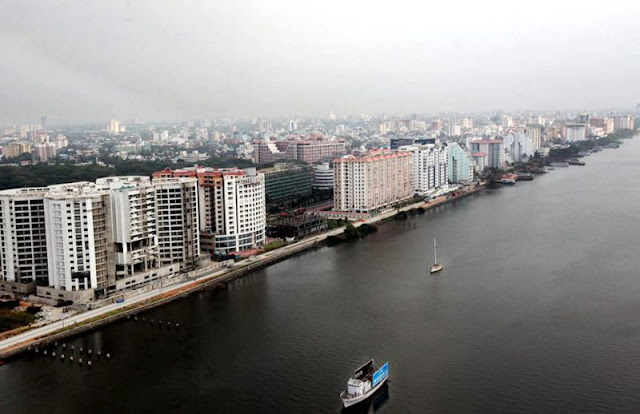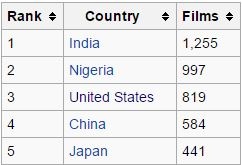Kerala - A Study on How it Stands Out
This post come in the heels of Markandey Katju's famously calling Keralites the truest Indians. I agree to the praises he heaped on Keralites but calling Keralites, the true Indians is a little too far fetched. Within Indian Federalism all states are equal, I understand he doesn’t really care about being politically correct. Kerala is indeed a very good state, for its discipline, maturity and high sociopolitical awareness among the population. They are highly civilized. Some of the direct impact can be explained in the following stats:
· Kerala has the literacy rate of a developed nation
Kerala’s literacy rate (93.9%) when compared to a country is as good as South Africa while India’s average is worse than Uganda at 74.4%.
· Kerala has the highest house ownership percentage (87.5%)
This is 33.5% ahead of the national average and exactly 9% ahead of the second best Haryana
· A staggering highest, sex ratio of 1084 females per 1000 males
Even with an already high sex ratio from 2001 census, it grew by 26, from 1058 to 1084 by 2011, which is 47 ahead of Puducherry, the only other state with above 1000 ratio per thousand males. When compared with the other countries, it ranks 19th which is way above than most of the developed countries like USA, UK, Germany, France, Italy etc.
· Kerala has the highest HDI in India, comparable to South Africa
If Kerala were to be deemed as a separate country, then it would rank 104 which is higher than South Africa (GDP per capita $13,321) when by national average India stands at 130th, even behind Namibia
· Highest life expectancy at birth
Keralites have the highest life expectancy at 74 which is almost 5 ahead of the next best, and more than 10 better than the national average.
· Kerala healthcare is better than many western countries
With a tremendous 2,700 medical institutions in the state, it has 3.3 beds per 1000 population which is more than 3.1 of USA. Child mortality rate is better than the developed nation, Georgia, at 12, while the national average is even behind Kenya at 44. With only 3% of India's population, the tiny state provides 66% of India's palliative care services. With a per capita income of only USD 1115, Hans Rosling highlighted, it has better Health Care than Washington DC with a per capita of USD 55,754 (roughly 50 times more)
· Kerala is ranked 1 at media exposure (by NHFS) with everyone highly aware of state and national politics
Political awareness among the common people including young population is quite high, thanks to its history of Social Reformers like Sree Narayana Guru, Shree Chattambi Swamigal and Ayyankali, Leftist Movements and the unique political situation that exists in Kerala. Political history in Kerala shows a trend of an alternating elected Right wing and Left government, which results in an increase in public welfare activities, much to the benefit of the common man. Strikes, agitations, and stirs, a sort of wildcat job action, are so common as to be almost unnoticeable.
· Kerala is ranked 1st for highest accessibility for safe drinking water
· It is the only state with a superb 100% institutional delivery when only 3 states have above 70% in whole India (Tamilnadu and Goa)
According to UNICEF only 30 countries in the world have a 100% institutional delivery while our national average is only 41%
· Kerala is ranked 2nd after Goa for least percentage of people below poverty line
With the national average at 22%, Kerala has only 7% of the population below poverty line while Goa has 5%
· It is 2nd ranked after Lakshwadeep in percentage of toilets available
When the national average is lowly 47% in toiliet availability Kerala stands at a super high 95.2%. Even the 2nd richest state by per capita income, Maharashtra, has only 54% of toilet availability.
· Ranked 2nd in HIV awareness after Manipur
· One of the slowest population growth
Kerala's birth rate is 14 per 1,000 females and falling fast while that of the U.S. is 16.
· Kerala is the 4th ranked state with least open defecation percentage at 1.75% when the national average is 29.8%
· It has the 4th highest TV ownership percentage with 76% while the national average is at only 47%
· Kerala is ranked 4th in Vaccination Coverage
· Kerala is ranked 2nd in diesel-based thermal electricity generation accounting to 21% of national market share
· Kerala earns the highest remittances in the whole country
Most of its remittances come from the Gulf region, at 49.9 k crore Rupees, higher than Tamilnadu, Punjab and UP. A major drawback to this, though, is it depends 31% on it as its contribution to the GDP.
· Kerala has the highest Road Density Per Square Kilometer
The road density per square kilometer is almost 4 times the national average indicating the unique settling pattern of the state population.
The state’s ability to match the standards of western countries when it makes only a fraction of their lump on average is called Kerala Phenomenon or Kerala Model. This phenomenon arises mainly from Kerala's land reforms, social upliftment of entire communities and reforms introduced by the communist party which held the state for a long period of time. Some describe Kerala's economy as a "democratic socialist welfare state". Some, such as Financial Express, use the term "Money Order Economy". Kerala's economic progress is above the national average.
More precisely, the Kerala model has been defined as:
- A set of high material quality-of-life indicators coinciding with low per-capita incomes, both distributed across nearly the entire population of Kerala.
- A set of wealth and resource redistribution programs that have largely brought about the high material quality-of-life indicators.
- High levels of political participation and activism among ordinary people along with substantial numbers of dedicated leaders at all levels. Kerala's mass activism and committed cadre were able to function within a largely democratic structure, which their activism has served to reinforce.
Kerala's unusual socioeconomic and demographic situation was summarized by author and environmentalist Bill McKibben:
Kerala, a state in India, is a bizarre anomaly among developing nations, a place that offers real hope for the future of the Third World. Though not much larger than Maryland, Kerala has a population as big as California's and a per capita annual income of less than $300. But its infant mortality rate is very low, its literacy rate among the highest on Earth, and its birthrate below America's and falling faster. Kerala's residents live nearly as long as Americans or Europeans. Though mostly a land of paddy-covered plains, statistically Kerala stands out as the Mount Everest of social development; there's truly no place like it.
Sources: List of Indian states and territories by Human Development Index, Indian states ranked by HIV awareness, Indian states ranking by families owning house,Indian states ranking by institutional delivery, List of Indian states by life expectancy at birth, Indian states ranking by media exposure, Indian states and territories ranked by poverty, Indian states ranking by drinking water, Indian states and territories ranking by sex ratio, Indian states ranking by television ownership, Indian states and union territories ranked by availability of toilets,Indian states ranking by vaccination coverage, Kerala model, Kerala model, Per capita income: State second only to Haryana, Economy of Kerala, UNICEF STATISTICS, India State Wise Road Density, NRIs beat FDI, keep the money coming, Page Redirection








Comments
Post a Comment